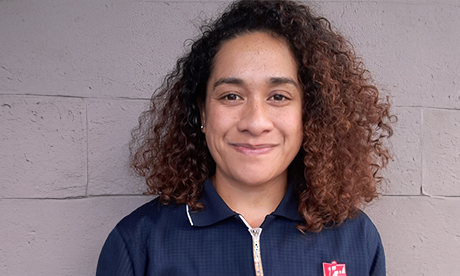Beneficiary crackdown plans won’t resolve worsening child poverty statistics.
Salvation Army policy analyst Ana Ika (pictured) says the Government’s approach is misguided.
“In theory, it sounds like it’ll work, but it’s a simple solution for a complex issue” she says.
But sanctioning beneficiaries to push them into employment will not resolve our worsening child poverty problem.
Many people receiving jobseeker support are in complex situations.
“It’s not as straightforward as putting a job in front of them and telling them to go to work” she says.
Ika notes the Stats NZ report which found that in the year to June 2023, an additional 36,000 children were living below the poverty line.
Child Poverty Reduction Minister Louise Upston said in a statement that’s why the Government wants to reduce the cost of living and get people working.
“Supporting parents into paid work instead of welfare dependency is important to the Government’s strategy” Upston says.
But it’s not that simple, Ika stresses. People need “meaningful employment”.
She notes that, as the Salvation Army works with the most vulnerable communities, they understand the intricacies involved.
“It needs a progressive approach that addresses the individual needs of those on jobseeker support.
“The current proposal around sanctioning them and ensuring that they’re constantly looking for employment in our view is a harsh treatment.”
In the year to June 2023,
an additional 36,000 children
were living below a poverty line.
The Statistics
Stats NZ’s report uses three primary measures to determine poverty.
The first two look at those with less than 50 per cent of the average household equivalised disposable income before and after housing costs.
These show that about twelve percent of children account for the former; 17.5 percent make up the latter.
The third measurement found 12.5 per cent of children live in material hardship. They live in households where costs mean they can’t afford to buy at least six of 17 essential items.
They also found Māori, Pacific and disabled children were worse off on all three primary measures compared with the total population.
Disparities
Ika says the “significant” disparities the statistics reveal are not new and need a targeted response to resolve them.
Some child poverty targets for European and Asian children have been met, she notes.
Looking at the bigger picture impacting child poverty is essential.
Ika mentions education levels, social housing registers and welfare – and says high rents are taking their toll.
Families sacrifice groceries to buy school uniforms. School children work 20 to 50 hours on top of their studies to support their families.
Pacific followed by Māori households are on the bottom rung of average annual household equivalised disposable income before costs, Ika says.
Furthermore, rent for poorer communities – which predominantly house Māori and Pacific people – rises faster and beyond income levels.
After paying all expenses, these factors contribute to the reasons the families which the Salvation Army supports have little or no savings or financial buffers, she says.
That’s why focusing on a single factor – like child poverty – can’t work.
Their families must be included. Many are sole parents, dependent on welfare and living below the poverty line.
Source
Additional readingNews category: New Zealand.




